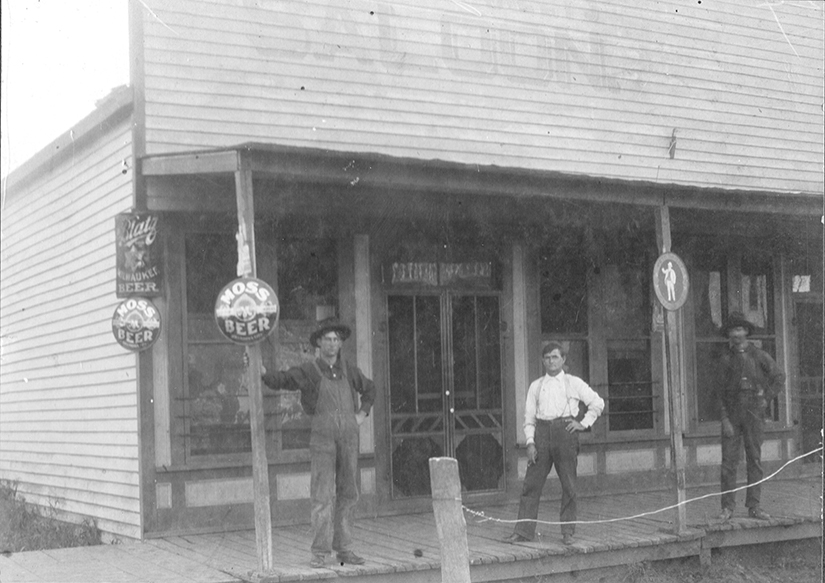Description:

When Oklahoma became a state in November of 1907, it was the first state to enter into the union with prohibition written into its constitution, dry from day one and it stayed that way for over half a century. But did you ever wonder how it got that way? Was Oklahoma a state full of teetotalers that happily accepted prohibition from the start? Well, not exactly.
You might be aware of groups like the Women’s Christian Temperance Union, and prohibition crusaders like Carrie Nation, and they were certainly influential in the effort to make Oklahoma dry, but when it came to the fight over prohibition in early Oklahoma it was ultimately a battle between the working class and the middle class. While there were other social and religious factors, the groups that typically fell into the wet side, immigrants, Catholics, ethnic minorities, etc., simply weren’t a large enough section of the population on their own to account for the 45% of Oklahoma voters that would vote against prohibition in 1907, and again in 1910.
On the side of the middle class were doctors, preachers, lawyers and business owners. They had their own clubs where they would socialize in a civil manner. They also had the bulk of the political power in the state, and they had the organization that came with the power of the Anti-Saloon League and the WCTU behind them. The working class however, belonged to Native Americans, African Americans, immigrants, and the poor. They had hard work, and at the end of the day, the saloon. While they couldn’t get into some of the social clubs of the middle class, they could get into a saloon, and that was where they did their socializing after long hard days in the oil fields, factories, mines, and packing plants.
Saloons had that sort of rough reputation that you’d see on a movie in the old west. Salacious dens of vice where laws were broken and the lawless spent their days and nights. Truth be told, they weren’t necessarily all like that. Sure, there were disreputable hangouts in bad parts of town where sometimes activities deemed less than savory, like gambling and prostitution, might be going on, but a lot of the saloons in the early days of Oklahoma were just the place that working men tended to gather after a hard day in the oil fields, factories, or wherever they’d put in an often very long day’s work.
They did have to gather with some restrictions. Liquor couldn’t be sold to minors, or sold between the hours of midnight and 5:00 a.m. And there weren’t any chairs in the saloons either. But at least it was somewhere to get a drink with the guys after work. Often lawmen would look the other way when it came to enforcing the state and local alcohol laws, but eventually they too started to feel pressure from groups like the Anti-Saloon League, who threatened to have police charged with corruption if they didn’t enforce the laws.
With influential groups like the ASL, the WCTU, and Evangelical churches backing prohibition, it wasn’t long before the prevailing school of thought was, if you’re for prohibition then you must be an upstanding citizen, and if you weren’t then you must be in favor of all of the crime and vice found in the saloon. Essentially what it boiled down to was nothing more than a really great campaign run by the organized prohibitionists in the more politically powerful middle class of early Oklahoma.
When it came time to put prohibition into the state constitution, it didn’t hurt that in half of what would become Oklahoma, the half that was Indian Territory, alcohol was already illegal. In fact, federal law stated that it was a crime to sell alcohol to Native Americans anywhere, whether they were in Indian Territory or not. And when the Enabling Act of 1905 stated that for the first 21 years of statehood the former Indian Territory would be dry, that went a long way toward assuring that the entire state would be alcohol free.
When it finally came time to close up shop at the saloons of Oklahoma, they didn’t go quietly. They went with a party. After all, they had to do something with all of that liquor that they weren’t going to be able to sell the next day. Alcohol was going for wholesale prices and everybody that wanted one last drink was happy to help clear out the shelves behind the bar.
Eventually the well organized efforts of the middle class with its ASL backing prevailed though, and on the morning of November 16, 1907 it all came to an end. Of course in hindsight it’s easy to see that prohibition was far from perfect in Oklahoma. It would lead to the rise of the bootlegger, and corruption in law enforcement, just like it did later on when it became the law nationally, but that’s another story.
For more information check out our podcast story on prohibition in early Oklahoma:
https://podcast.metrolibrary.org/oklahoma-by-the-drink-part-1-early-oklahoma-0